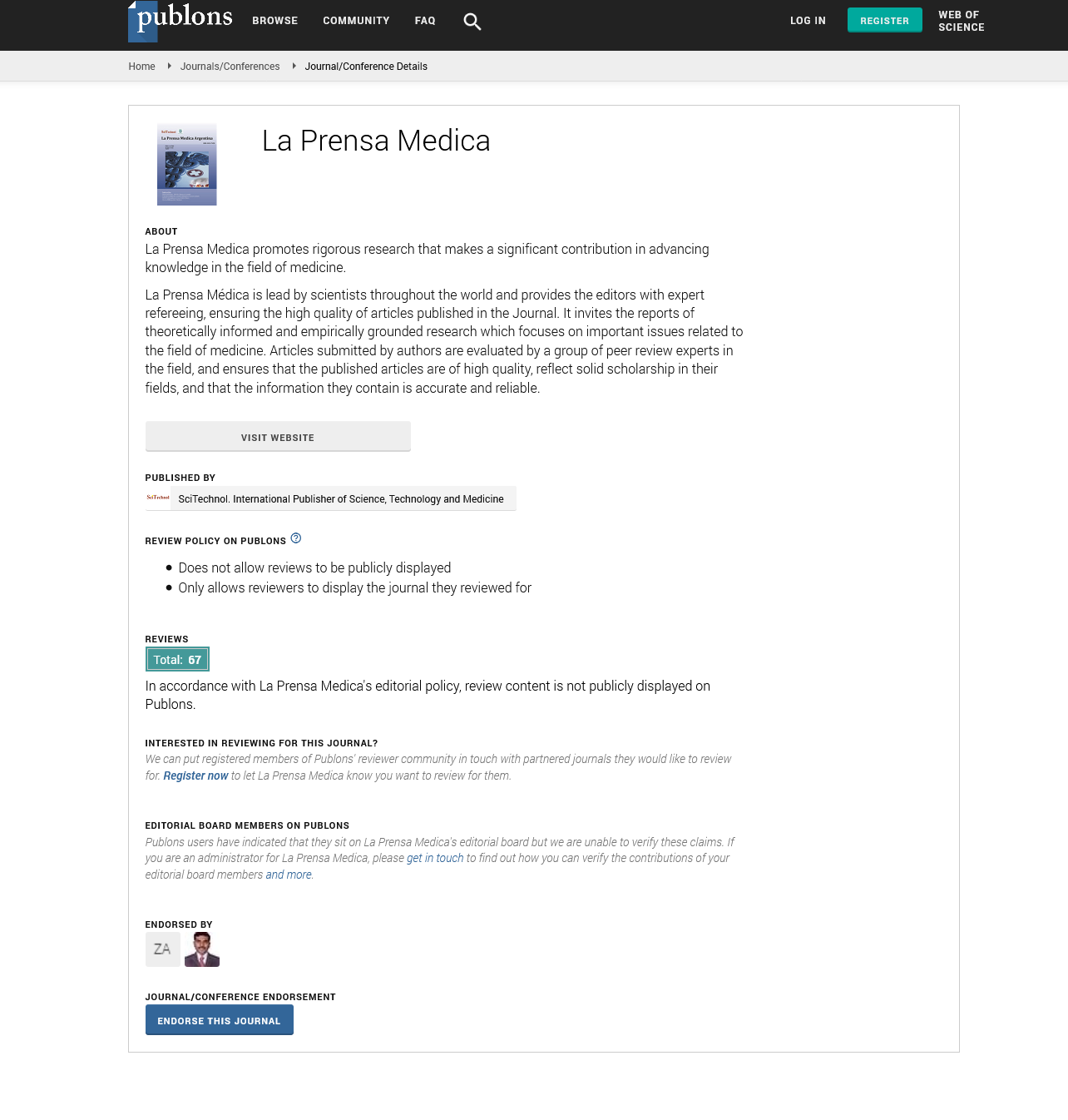Perspective, La Prensa Medica Vol: 109 Issue: 4
X-Linked Hypophosphatemia: The least known Disorder
Roche Cabral*
1Department of Pediatrics, University of Alberta, Edmonton, Alberta, Canada
*Corresponding Author: Roche Cabral,
Department of Pediatrics, University of Alberta, Edmonton, Alberta, Canada
E-mail: cabraroch11@ualberta.ca
Received date: 30 October, 2023, Manuscript No. LPMA-23-111735;
Editor assigned date: 01 November, 2023, PreQC No. LPMA-23-111735 (PQ);
Reviewed date: 16 November, 2023, QC No. LPMA-23-111735;
Revised date: 23 November, 2023, Manuscript No. LPMA-23-111735 (R);
Published date: 30 November, 2023, DOI: 10.4172/2324-8955.1000680
Citation: Cabral R (2023) X-Linked Hypophosphatemia: The least known Disorder. La Prensa Medica 109:4.
Roche Cabral*
1Department of Pediatrics, University of Alberta, Edmonton, Alberta, Canada
*Corresponding Author: Roche Cabral,
Department of Pediatrics, University of Alberta, Edmonton, Alberta, Canada
E-mail: cabraroch11@ualberta.ca
Received date: 30 October, 2023, Manuscript No. LPMA-23-111735;
Editor assigned date: 01 November, 2023, PreQC No. LPMA-23-111735 (PQ);
Reviewed date: 16 November, 2023, QC No. LPMA-23-111735;
Revised date: 23 November, 2023, Manuscript No. LPMA-23-111735 (R);
Published date: 30 November, 2023, DOI: 10.4172/2324-8955.1000680
Citation: Cabral R (2023) X-Linked Hypophosphatemia: The least known Disorder. La Prensa Medica 109:4.
Abstract
In the vast landscape of endocrine disorders, one rare condition stands out with its complex interplay of genetics, hormones, and bone health. X-linked hypophosphatemia (XLH), a genetic disorder, affects the body's ability to maintain normal phosphate levels, leading to a cascade of complications that impact bone development, growth, and overall well-being. As researchers delve into the intricate mechanisms underlying XLH, they aim to shed light on its pathogenesis and explore innovative treatments for those affected by this enigmatic disease.
Description
In the vast landscape of endocrine disorders, one rare condition stands out with its complex interplay of genetics, hormones, and bone health. X-Linked Hypophosphatemia (XLH), a genetic disorder, affects the body's ability to maintain normal phosphate levels, leading to a cascade of complications that impact bone development, growth, and overall well-being. As researchers delve into the intricate mechanisms underlying XLH, they aim to shed light on its pathogenesis and explore innovative treatments for those affected by this enigmatic disease.
The genetic culprit
XLH is caused by mutations in the PHEX gene located on the X chromosome. This gene encodes an enzyme that regulates the levels of phosphate in the blood. Mutations in PHEX disrupt the normal function of this enzyme, resulting in excessive loss of phosphate through the kidneys and impaired absorption in the intestines. The resulting low phosphate levels have far-reaching effects on various physiological processes.
The bone-phosphate connection
Phosphate is a vital component of bone mineralization and growth. In XLH, the insufficient phosphate availability disrupts the body's ability to build and maintain strong bones. This leads to a range of skeletal abnormalities, including bowed legs, short stature, and a higher susceptibility to fractures. Children with XLH often exhibit delayed walking due to the impact on bone development.
Beyond bones
Diagnosing XLH can be challenging due to its varied clinical presentation. Symptoms may include bone pain, muscle weakness, dental issues, and a waddling gait. Because of its rarity, XLH is sometimes misdiagnosed as other skeletal disorders, leading to delays in appropriate treatment. While the primary impact of XLH is on skeletal health, it can also affect other systems. Dental abnormalities, such as weakened tooth enamel, are common. Moreover, the disorder can lead to muscle weakness, joint pain, and a decreased quality of life. The comprehensive nature of XLH demands a holistic approach to its management.
Innovative treatment approaches
The treatment landscape for XLH has seen significant advancements in recent years. Conventional therapies involve the supplementation of phosphate and active vitamin D to correct mineral imbalances and support bone health. However, researchers are exploring novel treatments, including targeted therapies that directly address the underlying genetic mutations and aim to restore normal phosphate regulation.
Challenges in management
Managing XLH requires a multidisciplinary approach involving endocrinologists, orthopedic specialists, dentists, and physical therapists. Regular monitoring of phosphate levels, bone health, and growth parameters is crucial to track the progress and adjust treatment strategies accordingly. Empowering patients and their families with knowledge about XLH is paramount. Support groups and patient advocacy organizations play a vital role in providing resources, sharing experiences, and fostering a sense of community among those affected by this rare disorder.
Conclusion
Research efforts are focused on unraveling the complexities of XLH, from understanding the precise mechanisms of phosphate regulation to developing innovative therapies that can improve the lives of those living with the condition. Advances in genetic research are providing insights into potential gene therapies that hold promise for the future. As our understanding of X-linked hypophosphatemia deepens, so does the potential for improving the lives of those affected. From unraveling the genetic intricacies to developing targeted treatments, the quest to conquer this rare endocrine disorder is driven by a commitment to enhance the well-being and quality of life for individuals living with XLH.
 Spanish
Spanish  Chinese
Chinese  Russian
Russian  German
German  French
French  Japanese
Japanese  Portuguese
Portuguese  Hindi
Hindi 

